 When it comes to training for baseball, the devil is in the details. Every lift, sprint, and practice pitch is meticulously planned to ensure maximum performance while minimizing injury risk. With deadlifts being a staple in many athletes' strength and conditioning programs, there's been a rise in discussions around the most effective variations. Specifically, the debate often centers on barbell deadlifts versus trap bar deadlifts, colloquially known as hex bars. As baseball training is ever-evolving, aided by advancements in kinesiology and sports science, we find it crucial to discuss the utility of trap bar deadlifts. This article aims to explore whether trap bars are indeed effective for baseball players or if they are, as some critics state, "a useless piece of junk."
When it comes to training for baseball, the devil is in the details. Every lift, sprint, and practice pitch is meticulously planned to ensure maximum performance while minimizing injury risk. With deadlifts being a staple in many athletes' strength and conditioning programs, there's been a rise in discussions around the most effective variations. Specifically, the debate often centers on barbell deadlifts versus trap bar deadlifts, colloquially known as hex bars. As baseball training is ever-evolving, aided by advancements in kinesiology and sports science, we find it crucial to discuss the utility of trap bar deadlifts. This article aims to explore whether trap bars are indeed effective for baseball players or if they are, as some critics state, "a useless piece of junk."
We will delve into comprehensive scientific research to provide an evidence-based answer to this question. Citing studies like the "Electromyographic Comparison of Barbell Deadlift, Hex Bar Deadlift, and Hip Thrust Exercises: A Cross-Over Study and The Comparison Between the Trap Bar Dead Lift and Back Squat Exercises on Vertical Jump," we will offer data-backed insights. These insights will not only inform your own training regimen but also put to rest any preconceived notions or myths surrounding trap bar deadlifts in baseball.
The Scientific Insights into Trap Bar Deadlifts: Dissecting Muscle Activation
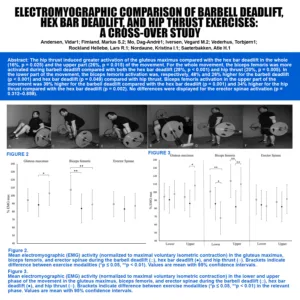 The study by Andersen et al., (2018) findings paints a nuanced picture of muscle activation during different types of deadlifts and hip thrust exercises, one that offers invaluable insights for baseball training programs. A key result is that trap bar (hex bar) deadlifts do not provide as high activation of the gluteus maximus as hip thrusts. The hip thrust is likely more effective in this regard because of the higher tension on the hip extensors, particularly towards the end of the movement. This means that if you are specifically targeting the gluteus maximus for improved performance and strength in baseball activities, the hip thrust could be a more effective exercise than the trap bar deadlift.
The study by Andersen et al., (2018) findings paints a nuanced picture of muscle activation during different types of deadlifts and hip thrust exercises, one that offers invaluable insights for baseball training programs. A key result is that trap bar (hex bar) deadlifts do not provide as high activation of the gluteus maximus as hip thrusts. The hip thrust is likely more effective in this regard because of the higher tension on the hip extensors, particularly towards the end of the movement. This means that if you are specifically targeting the gluteus maximus for improved performance and strength in baseball activities, the hip thrust could be a more effective exercise than the trap bar deadlift.
However, what is interesting to note is that trap bar deadlifts and barbell deadlifts showed similar gluteus maximus activation levels despite biomechanical differences. Barbell deadlifts, because the bar is lifted in front of the legs, traditionally place more stress on the hip joint and act as a longer lever arm. This makes barbell deadlifts more effective at activating the biceps femoris (hamstring) than the trap bar variant. For baseball players, focusing on hamstring strength through the biceps femoris could be vital for explosive sprinting and other quick lateral movements on the field. In this regard, barbell deadlifts appear to offer an advantage over trap bar deadlifts.
Breaking Down the Phases and Specific Muscle Contributions
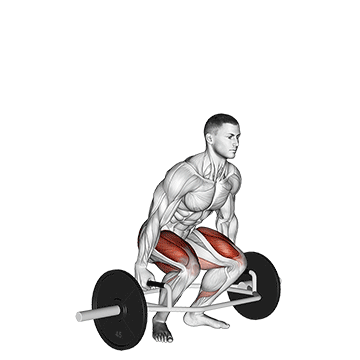 The findings also demonstrate that muscle activation varies across different phases of the movement. For example, barbell deadlifts showed higher biceps femoris activation in the beginning phase of the lift due to the longer lever arm from the hip joint to the load. In contrast, in the hip thrust, muscle activation in the gluteus maximus and hamstrings increased towards the end of the movement. This suggests that different phases of these lifts could be isolated and trained for specific functional advantages in baseball activities.
The findings also demonstrate that muscle activation varies across different phases of the movement. For example, barbell deadlifts showed higher biceps femoris activation in the beginning phase of the lift due to the longer lever arm from the hip joint to the load. In contrast, in the hip thrust, muscle activation in the gluteus maximus and hamstrings increased towards the end of the movement. This suggests that different phases of these lifts could be isolated and trained for specific functional advantages in baseball activities.
Interestingly, the study found that the activation levels of the erector spinae were similar across all types of lifts. This is a critical factor for baseball players who are often concerned with back health and spinal stability, as it suggests that the choice between trap bar and barbell deadlifts may not significantly affect the engagement of these critical back muscles.
In conclusion, the study makes it clear that the type of deadlift incorporated into a baseball player's training regimen should be carefully considered. While trap bar deadlifts may not isolate the posterior chain to the extent that barbell deadlifts do, they are by no means a 'useless piece of junk.' The similar activation of the gluteus maximus and erector spinae across both deadlift types suggests that trap bar deadlifts can still be a valuable part of a holistic baseball training program. However, suppose the focus is on maximizing the activation of specific muscles like the biceps femoris or the gluteus maximus. In that case, the barbell deadlift and the hip thrust may offer distinct advantages.
Unveiling the Science of Vertical Jumps in Baseball Athletes
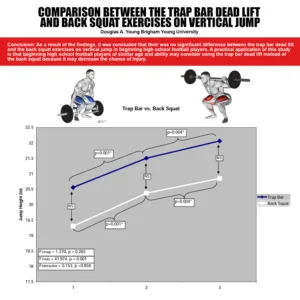 The 2011 study by Young at Brigham Young University aimed to elucidate the effects of two popular strength training exercises, the Trap Bar Dead Lift and the Back Squat, on vertical jump performance. This question is critical for any baseball athlete looking to improve their agility, speed, and overall performance on the field. At TopVelocity, we take these kinds of studies seriously, as they help inform our science-backed training programs for athletes.
The 2011 study by Young at Brigham Young University aimed to elucidate the effects of two popular strength training exercises, the Trap Bar Dead Lift and the Back Squat, on vertical jump performance. This question is critical for any baseball athlete looking to improve their agility, speed, and overall performance on the field. At TopVelocity, we take these kinds of studies seriously, as they help inform our science-backed training programs for athletes.
The Findings
Despite a high dropout rate reducing the initial sample size from 85 to 51, the study revealed that both groups saw statistically significant increases in their vertical jump heights over the eight-week training period. Interestingly, the data found no significant difference between the Trap Bar Dead Lift group and the Back Squat group regarding maximum vertical jump height (F=1.270, p=0.265).
Moreover, the research also illustrated significant improvements from pre-test to mid-test and from mid-test to post-test for both exercises. The effect size, denoted by Eta², was 0.461, meaning 46% of the total variance in vertical jump height could be attributed to the training methods.
What Does This Mean for Baseball Athletes?
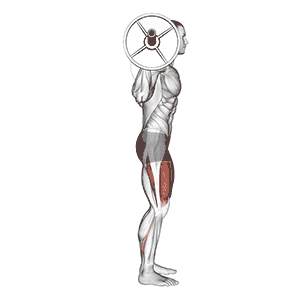 For young baseball players or those new to strength training, the study suggests that both the Trap Bar Dead Lift and Back Squat are effective means for improving lower body power, as evidenced by increases in vertical jump height. This is important for baseball athletes who require quick bursts of speed and power, either when batting or fielding.
For young baseball players or those new to strength training, the study suggests that both the Trap Bar Dead Lift and Back Squat are effective means for improving lower body power, as evidenced by increases in vertical jump height. This is important for baseball athletes who require quick bursts of speed and power, either when batting or fielding.
Takeaways for TopVelocity Programs
Our approach at TopVelocity is always informed by evidence-based practice. Studies like these not only substantiate the science behind our training programs but also help us innovate and push the boundaries of what's possible in athletic training, ensuring that you reach your fullest potential while minimizing the risk of injury.
So, whether you're a young athlete looking to make a mark or a pro wanting to fine-tune your skills, it's clear: science-backed training methods are not just a trend; they're a game-changer.
Are Trap Bar Deadlifts Good for Baseball?
One of the pervasive questions in the baseball training community revolves around the efficacy of various strength training exercises, particularly the Trap Bar Deadlift. At TopVelocity, we're committed to dissecting such questions through the lens of evidence-based practice to guide athletes towards optimal performance and injury prevention.
The Trap Bar Deadlift: A Misnomer?
Despite its name, the Trap Bar Deadlift is not purely a deadlift variation but leans more towards a squat variation. This exercise involves a combination of hinging at the hips and bending at the knees, sharing more biomechanical similarities with squats than traditional deadlifts. Consequently, the muscle groups primarily targeted are the quadriceps and erector spinae, similar to a squat, rather than the hamstrings and glutes which are the focus of traditional deadlifts.
Why This Matters for Baseball Players
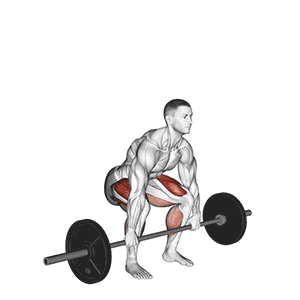 In baseball, generating power from the lower body is crucial for activities like pitching, batting, and sprinting. Traditional deadlifts, which place more emphasis on the posterior chain, are more effective in simulating the hip hinge movement often needed for these explosive actions. For a sport that requires rapid bursts of power, such as stealing bases or delivering a powerful pitch, optimizing the posterior chain is essential. In contrast, squats and squat-like exercises such as the Trap Bar Deadlift primarily target the quadriceps, which may not be as directly applicable to the demands of baseball.
In baseball, generating power from the lower body is crucial for activities like pitching, batting, and sprinting. Traditional deadlifts, which place more emphasis on the posterior chain, are more effective in simulating the hip hinge movement often needed for these explosive actions. For a sport that requires rapid bursts of power, such as stealing bases or delivering a powerful pitch, optimizing the posterior chain is essential. In contrast, squats and squat-like exercises such as the Trap Bar Deadlift primarily target the quadriceps, which may not be as directly applicable to the demands of baseball.
Implications for TopVelocity Programs
Given that the Trap Bar Deadlift acts more as a squat variation than a deadlift, it is not recommend as an additional training exercises to the TopVelocity programs. Our science-backed 3X Pitching Velocity Program and 2X Velocity Program for Position Players focus on exercises that closely mirror the biomechanical needs of baseball athletes which include many quad-dominate lifts. Adding in more quad loading in another squat variation like with a Trap bar deadlift would not be in support of the benefits of the training programs.
The Verdict
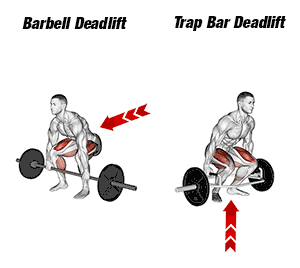 While the Trap Bar Deadlift is an exercise that can be used for general strength and conditioning, it may not offer the most sport-specific benefits for baseball players looking to improve their game. If the goal is to optimize performance in baseball-specific movements, then traditional deadlift variations that emphasize the posterior chain should be prioritized along with full range of motion squatting.
While the Trap Bar Deadlift is an exercise that can be used for general strength and conditioning, it may not offer the most sport-specific benefits for baseball players looking to improve their game. If the goal is to optimize performance in baseball-specific movements, then traditional deadlift variations that emphasize the posterior chain should be prioritized along with full range of motion squatting.
In the ever-evolving landscape of sports science, we remain committed to providing you with training regimens that are not only cutting-edge but also critically evaluated for their relevance in baseball. Share this information with your fellow athletes and coaches—because when it comes to training, every detail matters.
Feel free to dig deeper into our other evidence-based articles and let's continue to innovate the world of baseball training!
Reference:
Andersen, V., Fimland, M. S., Mo, D. A., Iversen, V. M., Vederhus, T., Hellebø, L. R. R., ... & Saeterbakken, A. H. (2018). Electromyographic comparison of barbell deadlift, hex bar deadlift, and hip thrust exercises: A cross-over study. The Journal of Strength & Conditioning Research, 32(3), 587-593. https://journals.lww.com/nsca-jscr/Fulltext/2018/03000/Electromyographic_Comparison_of_Barbell_Deadlift,.1.asp
Young, D. A. (2011). Comparison Between the Trap Bar Dead Lift and Back Squat Exercises on Vertical Jump. Brigham Young University.



